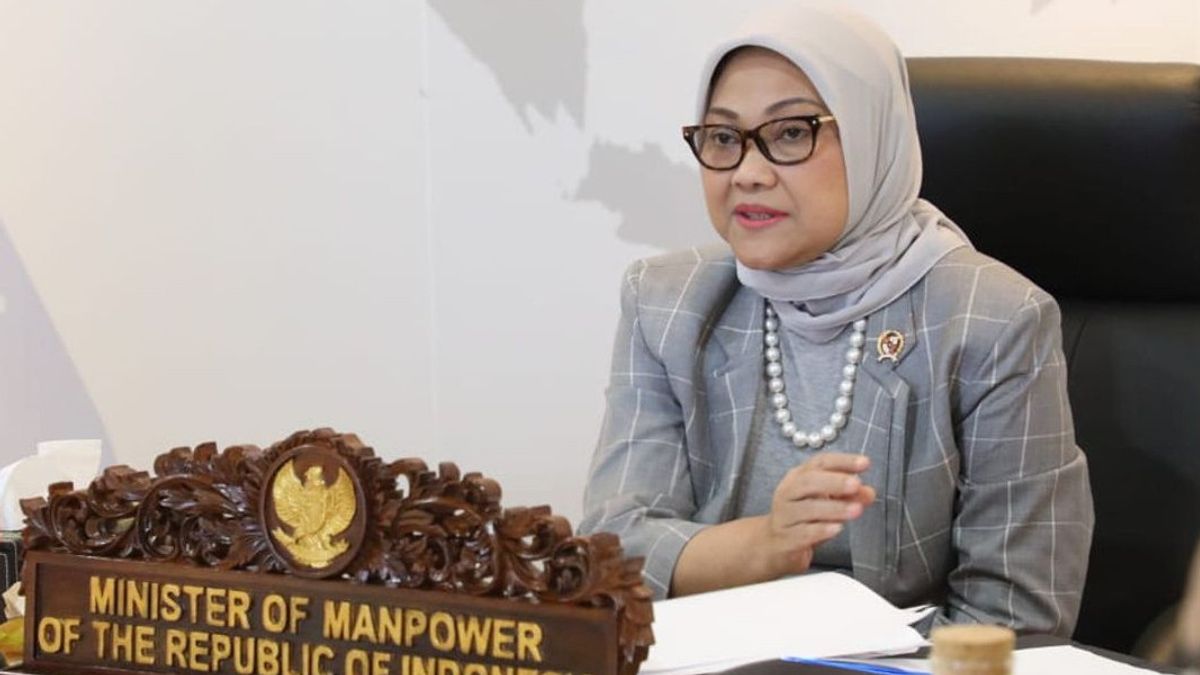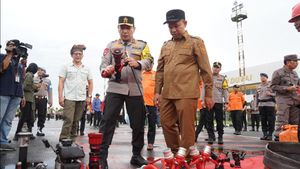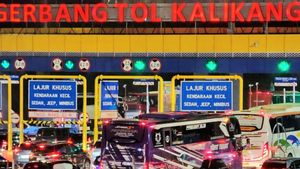JAKARTA - The Minister of Manpower (Menaker) Ida Fauziyah said Indonesia's minimum wage is too high to the point that it is difficult for employers to meet it. Is what Ida said true? If our wages are high, why are there still many poor people? We explore the cause-and-effect relationship between wage rates and poverty.
Ida describes the method used by the government in determining the minimum wage: the Kaitz Index. The Kaitz Index is an international method for measuring the level of minimum wages in a region by comparing the prevailing minimum wage with the median wage.
According to Ida, the minimum wage in almost all parts of Indonesia currently exceeds the median wage. In fact, according to him, Indonesia is the only country with a Kaitz Index of more than 1, where according to Ida, the ideal Kaitz Index ranges from 0.4 to 0.6 percent.
"This condition of the minimum wage which is too high causes most of our employers to be unable to reach it and will have a negative impact on implementation in the field," he explained in a virtual press conference, Tuesday, November 16.

Calculations by the government finally set the average minimum wage increase at 1.09 percent by 2022. This figure is far from the wage increase demanded by KSPI, which ranges from seven to ten percent.
KSPI President Said Iqbal called this proof of the government's alignment with the interests of entrepreneurs and investors, not workers. According to Iqbal, the protection policies implemented by the Ministry of Manpower (Kemenaker) are far from what the workers want.
Iqbal also called the Joko Widodo (Jokowi) government a low-wage regime similar to the New Order. Even more cruel. "This is like bringing back the low-wage regime, much worse than during the Suharto era in the New Order era."
"Soeharto didn't do this in the New Order. The ministers (Jokowi) were so mean. Even Suharto's ministers didn't do this," Iqbal said in a virtual press conference, Tuesday, November 16.
Poverty, inequality and wagesLast March 2019, the National Team for the Acceleration of Poverty Reduction (TNP2K) released a report on the results of their work. The report revealed that poverty has been reduced since 2015, from 11.2 percent in March 2015 to 9.41 percent in March 2019.
But behind it there is a problem that remains serious. The TNP2K survey shows that one percent of Indonesia's rich people control 50 percent of national assets. In other words, there is a concentration of national assets in a small portion of the richest group in Indonesia. The serious problem of inequality.
"That means that the remaining 90 percent of the population is fighting over the remaining 30 percent. That needs to be corrected," said TNP2K Executive Secretary Bambang Widianto in a presentation at the Vice President's office, Jakarta.
Indonesia, said Bambang, occupies the fourth position as the country with the highest comparison after Russia, India and Thailand. The basis of this inequality, according to Bambang, is access to basic needs.
So what must be done in the future is to improve schools, sanitation, health, electricity, and clean water. After that, the government is also obliged to fix the problem of employment. This aspect is important apart from attracting investment and building infrastructure.

On the surface, it appears that the business world needs support in order to create jobs, which in the end will be beneficial for the community. But is reducing workers' wages the right solution? The answer is, not really.
There are several explanations why the narrative built by the Ministry of Manpower behind setting the 2022 minimum wage deserves to be criticized. First, about the objections experienced by entrepreneurs and investors. Director of the Center of Economic and Law Studies (CELIOS) Bhima Yudhistira views this narrative as absurd.
We remember that in 2021 there was no wage increase. Then, the Job Creation Act (Ciptaker) called Bhima is a gift for entrepreneurs and investors. "Now the various stimulus for workers has been lifted, including wage subsidies. How can you object?"
Then there is the concern that the business world will not be able to accommodate workers with high wages. This too is wrong. Bhima brings up the theory put forward by David Card, winner of the 2021 Nobel Prize in Economics, which finds that an increase in the minimum wage does not cause job opportunities to decrease.
"On the contrary. (The increase in wages) actually opens up new job opportunities. This means that entrepreneurs actually benefit from an increase in the minimum wage because the aggregate demand increases," said Bhima.
Another erroneous narrative is that this is a way to overcome the inequality of wage standardization between regions. Researcher from the Institute for Development of Economics and Finance (INDEF) Nailul Huda confirmed the existence of inequality in wage standardization in several regions of Indonesia. But pushing wage increases to a minimal range is the wrong way to go.
"For example, if we compare Central Java's UMR with Jakarta, the difference is almost double. So if you become the government to reduce inequality, the period is reduced from the upper one? No. You should add the lower one so that the welfare can be relatively similar. So don't think about it backwards, " he told VOI Wednesday, November 17.
Wages as a social net
Director of the Center of Economic and Law Studies (CELIOS) Bhima Yudhistira revealed that the problem that makes workers stifled with the minimum wage increase is that the minimum wage is really minimal because the government does not provide sufficient social security. Bhima explained, in Indonesia, the ratio of social security to GDP is only 2.1 percent.
"Much lower than other ASEAN countries. Even with Timor Leste losing ... In Germany, the minimum wage was only implemented in 2015 because the social security ratio was already high, reaching 25 percent before the pandemic," said Bhima.
Basically, the minimum wage is a social safety net concept, especially for people who are new to the labor market. Now, when the safety net is too small and the increase is below inflation, it becomes difficult for people to escape the poverty line through work endeavors.
"Moreover, one worker has to support four family members. The wage is only Rp. 1.7 million in Jogja. While the poverty line for four people is Rp. 1.9 million. So the minimum wage is small, in fact, it is not able to improve the welfare of the poor," said Bhima.
Researcher from the Institute for Development of Economics and Finance (INDEF) Nailul Huda explained, the minimum wage is formed based on the daily cost of living in an area. So, when there was a standardization of the minimum wage which turned out to be high, it was the impact of the high cost of living necessities.
"The cost of living that has gone up is difficult to bring down. So yes, a high minimum wage is very reasonable in some areas that have a high standard of living cost as well. So when the minimum wage is high but the need is also high, it's no wonder there are still many poor people," said Nailul Huda .
So, can you imagine the logical deviations in this policy? Ida probably forgot, some people work to make ends meet. Not to enrich yourself.
*Read other information about SOCIAL or read other interesting articles from Detha Arya Tifada and Yudhistira Mahabharata.
Other BERNASThe English, Chinese, Japanese, Arabic, and French versions are automatically generated by the AI. So there may still be inaccuracies in translating, please always see Indonesian as our main language. (system supported by DigitalSiber.id)









